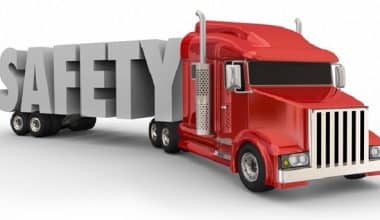Along with wellness promotion, disease prevention, treatment, and hospice care, rehabilitation must be included in any comprehensive healthcare system. The goal of rehabilitation is to return a child, adult, or senior to as normal a life as possible, including full participation in school, job, leisure activities, and important tasks like caring for the family. About 2.4% of the world’s population is dealing with a health issue that could be helped through rehabilitation. It is expected that as populations age and their health fluctuates, the demand for rehabilitation services would rise over the world. In this article, we will discuss the California Department of rehabilitation services, its locations, corrections, what they do, and how they operate.
Rehabilitation Overview
Rehabilitation is “a set of interventions aimed to optimize functioning and reduce disability in individuals with health conditions in interaction with their environment,” according to one definition.
Rehabilitating a child, adult, or senior to maximum independence in daily tasks, as well as full engagement in meaningful life roles like caring for family and friends, is the ultimate goal of rehabilitation. It does this by helping the person and their family deal with their underlying health conditions and symptoms, adapting their environment to meet their needs, using assistive products, learning how to better manage their own health, and modifying tasks so that they can be completed safely and independently. The combination of these methods can aid a person in overcoming cognitive, sensory, communicative, nutritional, and mobility impairments.
At some point in their lives, almost everyone will require rehabilitation services due to the effects of an injury, operation, disease, illness, or simple functional deterioration due to aging.
Examples of Rehabilitation
The following are some examples of rehabilitation:
- Rehabilitation programs for people with Parkinson’s disease and stroke emphasize physical activity to increase muscle strength, voluntary movements, and balance.
- Teaching someone with heart disease how to exercise without putting their health at risk
- Rehabilitation of speech and language skills following brain damage
- Adjusting a senior’s living space to lessen hazards and the likelihood of slips and falls
- Treatment of emotional anguish caused by a spinal cord injury using psychological means
- Methods of positioning and splinting for postoperative burn patients in order to promote skin healing, lessen edema, and restore mobility
- Making, fitting, and re-fitting a prosthetic for an amputee; Educating the amputee on how to use the prosthetic
- Individuals with intellectual disabilities, autism spectrum disorders, and schizophrenia can benefit from social skills training
- Dosing a youngster with cerebral palsy with medication to lessen stiffness
- Teaching a blind individual how to navigate with a white cane; and
- Improving a critically ill patient’s breathing, avoiding complications, and hastening recovery are all goals of intensive care.
Furthermore, rehabilitation places a strong emphasis on the individual, with therapies chosen with their unique needs and preferences in mind. Rehabilitation services may be delivered in a variety of locations, including hospitals (both inpatient and outpatient), private clinics specializing in physical or occupational therapy, or the patient’s own home, school, or place of employment in the community.
Also, physical therapists, occupational therapists, speech-language pathologists and audiologists, orthotists and prosthetists, clinical psychologists, physical medicine and rehabilitation physicians, and rehabilitation nurses are all part of the rehabilitation workforce. There are many more medical professionals who may contribute to a patient’s successful recovery, including family doctors, surgeons, and community health workers.
What Are the Types of Rehabilitation?
Rehabilitation therapy comes in a wide variety of types, each one tailored to a certain set of symptoms or conditions. Their fundamental purposes are the same: For the purpose of assisting people in regaining their functional abilities and independence following illness, injury, surgery, stroke, cardiac events, or any other medical concerns. Here are the various types of rehabilitation therapy.
#1. Occupational Rehabilitation
Therapists who specialize in occupational rehabilitation provide services to those who need extra support in order to carry out typical, everyday tasks. Occupations might include not just what you do for a living but also how you take care of yourself on a daily basis and the kinds of things you do for fun. Occupational rehabilitation is a form of treatment that focuses on restoring or enhancing a person’s capacity to do meaningful activities of daily living.
Also, occupational therapists assist by modifying the environment so that people with disabilities can eat, dress, wash their teeth, go to school, and work. Modifications can be made to the way a task is approached, the environment in which it is accomplished, or the individual’s ability to perform the activity.
Furthermore, it’s possible that infants and the elderly alike could benefit from occupational therapy. There are endless ways in which occupational therapy may help these individuals, such as:
- Seniors with physical restrictions may benefit from working with a therapist to rediscover and enjoy old favorites in creative new ways.
- Therapists can help adults with depression get back into their regular routines in a way that increases their chances of success by recommending specific activities and paces.
- An injured person who has lost the ability to use a fork may work with a therapist to rebuild grip strength and adapt actions in order to eat on their own again.
- A therapist may be necessary for children with physical limitations to learn how to use utensils and a computer, or to improve their handwriting.
- Corporate executives might collaborate with a therapist to develop a healthy work/life balance or ergonomically improve their workplace.
- Therapists may help spinal cord injury patients avoid actions or behaviors that could worsen their impairments.
#2. Speech Rehabilitation
Therapists who specialize in speech-language pathology help people who are having difficulty communicating. Problems with speech, language, voice, swallowing, and fluency can be helped through speech therapy. However, if your newborn has been diagnosed with a disorder like cerebral palsy, cleft palate, or Down syndrome that makes it hard for them to eat, drink, or communicate, a speech therapist may be able to help.
Also, instructed communication exercises are helpful for children who struggle with speech disorders including lisping and stammering. Speech therapists can also help adults with learning disabilities or medical conditions like stroke, neck or head cancer, and Parkinson’s disease.
In addition, communication skills and speech mechanics are brought together in speech therapy. The goal is to improve the patient’s communication so that it is more functional and helpful to the patient.
Also, speech therapists frequently use language intervention activities (language drills to practice communication skills), articulation therapy (demonstrating how to move the tongue to create certain sounds), and feeding and swallowing therapy (tongue, lip, and jaw exercises to strengthen the muscles of the mouth and throat) to help their patients improve their speech and language abilities.
The following medical issues often necessitate the services of a speech therapist:
- Aphasia is a language disorder caused by injury to the brain.
- Inaccurate and sluggish reading skills; a condition known as dyslexia.
- Issues with oral feeding, such as poor chewing, swallowing, or drooling, are common.
- Problems swallowing are known as dysphagia.
- Issues with your voice’s resonance Challenges with the pitch, volume, and quality of one’s voice
- Movement, coordination, language, and speech difficulties due to dyspraxia.
- Issues with Fluency – a problem with the natural flow of speech (like stuttering)
- Speaking effectively and making fewer sound mistakes is a problem known as articulation.
- Cleft palate.
- Parkinson’s disease.
- Cerebral palsy.
#3. Physical Rehabilitation
When people have discomfort or trouble moving and living normally, they might seek help from physical therapists.
Physical therapists help people in a wide variety of situations, including those where they need to reduce pain, increase mobility, recover from a stroke, injury, or surgery, recover from childbirth, recover from sports-related injuries, learn to use mobility aids like walkers and canes, deal with long-term conditions like heart disease or arthritis, and more. Also, read PHYSICAL THERAPIST: Definition, Salary, Assistant, How to Become One & Courses.
Furthermore, a physical therapist will evaluate your range of motion, balance, heart rate, posture, and walking and stair-climbing ability if your doctor prescribes physical therapy. Your therapist will next devise a treatment plan to reduce your symptoms and restore your ability to do daily tasks or move about freely. Some typical treatments are
- Pain management
- Therapeutic movements and postures restore strength and mobility after injury or illness.
- Restoration of Step and Balance.
- Muscle pain and spasms can be treated by massage, heat, ice, or ultrasound.
- Rehabilitation and physical therapy for adjusting to an artificial limb.
- Casts, splints, braces, and splints, as well as burn care.
- Working out with mobility aids like canes, crutches, walkers, and wheelchairs.
- Cardiovascular strengthening
#4. Respiratory Therapy
Patients with respiratory conditions or issues benefit from this form of rehabilitation care. Its goal is to help these patients lessen respiratory distress, maintain open airways, and, when necessary, learn how to utilize inhalers and supplementary oxygen correctly.
However, numerous medical facilities offer a wide range of rehabilitation therapy options. There are various types of rehabilitation services, such as those provided in hospitals, clinics, and even in people’s own homes.
A multidisciplinary team of rehabilitation experts in a hospital-like facility often provides all of these common types of therapy and more to inpatients. Patients visit outpatient clinics, which offer a wide range of therapeutic services, typically by making an appointment and traveling to the clinic. Physical, occupational, and speech therapists from home-based rehabilitation programs visit patients’ homes on an appointment basis to provide necessary treatments.
California Department of Rehabilitation
The California Department of Rehabilitation (DOR) offers numerous services, including psychotherapy, vocational instruction, and assistance in finding gainful employment. You can acquire the assistance and training you need to get back to work, switch careers, or enter the workforce for the first time with the aid of DOR. “Vocational Rehabilitation” (VR) is the umbrella term for all of these assistance programs.
They tailor the assistance they provide to your specific need. Your counselor will help you figure out the steps you need to take to reach your goals.
California Department of Rehabilitation services are available to those who qualify due to their disability. You are immediately qualified for California Department of Rehabilitation services if you receive Supplemental Security Income (SSI) or Social Security Disability Insurance (SSDI) from the Social Security Administration.
Also, you might or might not be eligible for California Department of Rehabilitation services if you are disabled but do not receive Social Security disability benefits. The California Department of Rehabilitation has limited resources, therefore your qualifying will depend on the severity of your disability. Services will be prioritized for those with the most severe disability. No matter the nature of your handicap, it is imperative that you submit an application for the assistance you require.
If you are eligible, the California Department of Rehabilitation’s services is provided at no cost.
What Does the Department of Rehabilitation Do in California?
The mission of the California Department of Rehabilitation (DOR) is to promote the independence, productivity, and full participation in society of all people with disabilities in the state of California. To increase the likelihood of success, we personalize our services for each client. Each job seeker is evaluated by a vocational rehabilitation team to determine the optimal set of services and supports for making progress toward and maintaining gainful employment. Career evaluation and counseling, job search and interview training, independent living skills instruction, vocational instruction, assistive technology, and other services may be provided by the California Department of Rehabilitation.
Also, the California Department of Rehabilitation is an option to consider if your handicap or chronic health condition makes it difficult for you to find or hold a job but you still want to work.
Who Is Automatically Eligible for California Department of Rehabilitation Services?
A person’s eligibility for the California Department of Rehabilitation services is determined by the nature of their handicap. The California Department of Rehabilitation services will be provided automatically to everyone receiving Social Security Disability Insurance or Supplemental Security Income.
Also, disability severity is a determining factor in receiving benefits from any source other than SSDB or SSI. Due to a lack of resources, the California Department of Rehabilitation may have to reject certain applicants for disability benefits. However, you shouldn’t let the possibility of rejection discourage you. You should submit an application for DOR services if you believe you will benefit from them. If you meet the requirements, you can use the DOR’s services at no cost.
California Department of Rehabilitation and Corrections
The state of California’s criminal law enforcement agency, the California Department of Corrections and Rehabilitation (CDCR) is in charge of the state’s prison and parole systems. Sacramento is home to its main office.
However, approximately 66,000 federal officers work for U.S. Customs and Border Protection (CBP), a division of the Department of Homeland Security (DHS), and 42,000 police officers work for the New York City Police Department, making the California Department of Corrections and Rehabilitation the third largest law enforcement agency in the United States. Officers working for the California Department of Corrections and Rehabilitation (CDCR) are sworn police officers.
In 2013, the California Department of Corrections and Rehabilitation (CDCR) employed around 24,000 police officers (state corrections officers), 1,800 parole agents, and 150 investigators.
On December 12, 2022, Governor Gavin Newsom appointed Jeff Macomber to the position of Secretary at the California Department of Corrections and Rehabilitation (CDCR).
The first government-run organization in California was established in 1851. The Waban, a 268-ton wooden vessel, served as the location for this establishment. Thirty inmates on the prison ship built San Quentin State Prison, which opened in 1852 with 68 inmates.
Furthermore, the Department has been operating 31 prisons in various locations across the state since 1852. The California Department of Corrections and Rehabilitation (CDCR) was founded in 1912 as the California State Detentions Bureau. The California Department of Corrections was renamed in 1951. The Corrections and Rehabilitation Department of California was renamed in 2004. A year of incarceration for one offender cost an average of $81,203 in 2018–2019.
What Does the Dor Pay For?
The California Department of Rehabilitation (DOR) “Administers the largest vocational rehabilitation and independent living programs in the country,” making it a valuable tool for people looking for work. However, the California Department of Rehabilitation (DOR) is committed to ensuring that people with disabilities have access to the same employment and higher education counseling opportunities as everyone else through its relationship with the Workability IV program. DOR offers a variety of specific options, such as:
- Paying the costs of higher education such as tuition, fees, books, and parking permits
- Counseling and testing for future professions
- Training for a Profession
- When necessary, assistive technologies
- Mutual aid
- Assistance with living alone
- Assistance during Change
- Promotion of Systems
- Services of a Personal Assistant
- Referrals
- Acquiring New Abilities
- Help with Housing Costs
What Is the Benefit of Rehabilitation?
Rehabilitation can lessen the effects of many different diseases, illnesses, and injuries, both short-term and long-term. It complements the results of standard medical and surgical care to help patients recover more quickly and with less discomfort. Examples of conditions where rehabilitation may be helpful include spinal cord injury, stroke, and bone fractures.
By providing patients with the self-management skills and assistive equipment they need, or by managing pain or other problems, rehabilitation serves to eliminate or slow down the crippling effects of chronic health disorders like cardiovascular disease, cancer, and diabetes. Therefore, it aids in a healthy aging process.
Investing in someone’s rehabilitation pays dividends for both the person and society as a whole. It can help people avoid expensive hospitalization, reduce their stays, and prevent them from returning. Since rehabilitation helps people find or return to work or live independently, they need less financial or caregiving assistance.
In order to achieve Sustainable Development Goal 3 (to “ensure healthy lives and promote well-being for all at all ages”), rehabilitation must be included in universal health care.
How to Apply for the California Department of Rehabilitation Services
Anyone can request DOR’s assistance by filling out one of these forms.
- Get an application from the DOR’s website, fill it out, then turn it in to your county DOR’s office. You can submit it in person, via email, or both.
- You can get an application and submit it right away by going to your local DOR office.
- Stop into your neighborhood America’s Job Center of California (formerly One-Stop) and fill out an application.
- Counselors and the Department of Rehabilitation work to refer people to America’s Job Center of California.
- A benefits consultant may walk you through the application process.
What Are the Myths and Misconceptions Regarding Rehabilitation?
It is not only those with permanent or severe physical impairments that can benefit from rehabilitation services. Instead, rehabilitation should be made available to anybody who could benefit from it due to the fact that it is a vital health service for those who have health problems, impairments, or injuries that cause functional limitations.
Therapeutic interventions like rehabilitation are not reserved for the wealthy. And it’s not something you can try if you’ve already exhausted all other avenues of treatment for your health problem.
All people should have access to timely, high-quality, and cost-effective rehabilitation interventions so that the social, economic, and health advantages of rehabilitation can be exploited to their full potential. As soon as a health problem is diagnosed, rehabilitation therapies should be provided with other health interventions.
Conclusion
In conclusion, when it comes to employment and community participation, the Department of Rehabilitation (DOR) in California is a vital resource for people who are visually impaired. The California Department of Rehabilitation (DOR) finances 29 Independent Living Centers that serve people with disabilities by providing them with information and referral services and technical help related to the Americans with Disabilities Act (ADA) so that they can lead full and productive lives.
California Department of Rehabilitation FAQs
What is vocational rehabilitation in California?
The Department of Labor’s Vocational Rehabilitation Program offers numerous services, such as career counseling, training in job-hunting and interview techniques, instruction in self-sufficiency, on-the-job instruction, preparation for the workforce, and the provision of adaptive equipment.
What Is Rehab Assistance?
A rehabilitation assistant (sometimes known as a “rehab aide”) assists a physical therapist or occupational therapist in treating patients. Physical therapists often rely on occupational therapy assistants to carry out their prescribed treatments. Their work may also involve guiding exercises, instructing patients in self-care, and checking up on their progress. An associate’s degree and meeting the state’s standards for license or certification are necessary for entry into this field.
Similar Article
- CASE MANAGEMENT: Definition, Models, Examples, and Processes.
- GRANTS FOR HOMEOWNERS FOR REPAIRS: Tips & Guide
- HOW TO BECOME A THERAPIST: Types, Requirements & Best Paths for Becoming a Therapist”.
- CAREERS THAT PAY WELL: The Top 21 Highest Paying Careers in 2023






